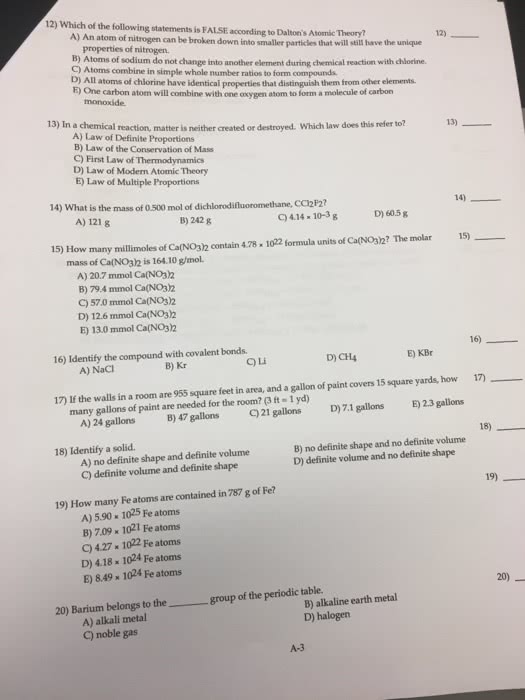1
answer
0
watching
227
views
11 Dec 2019
Matter is neither created nor destroyed in a chemical reaction. Thus, the mass of the products of a chemical reaction must be equal to the mass of the starting materials. Formally, this concept is called the law of conservation of mass.
A sample of sodium reacts completely with 0.568 kg of chlorine, forming 936 g of sodium chloride. What mass of sodium reacted?
When carbon is burned in air, it reacts with oxygen to form carbon dioxide. When 26.4 g of carbon were burned in the presence of 83.6 g of oxygen, 13.2 g of oxygen remained unreacted. What mass of carbon dioxide was produced?
Matter is neither created nor destroyed in a chemical reaction. Thus, the mass of the products of a chemical reaction must be equal to the mass of the starting materials. Formally, this concept is called the law of conservation of mass.
A sample of sodium reacts completely with 0.568 kg of chlorine, forming 936 g of sodium chloride. What mass of sodium reacted?
When carbon is burned in air, it reacts with oxygen to form carbon dioxide. When 26.4 g of carbon were burned in the presence of 83.6 g of oxygen, 13.2 g of oxygen remained unreacted. What mass of carbon dioxide was produced?
1
answer
0
watching
227
views
For unlimited access to Homework Help, a Homework+ subscription is required.
Trinidad TremblayLv2
13 Dec 2019
Related textbook solutions
Basic Chemistry
5 Edition,
Timberlake
ISBN: 9780134138046
Principles of Chemistry Molecular Approach
4th Edition,
Tro
ISBN: 9780134112831
Principles of Chemistry Molecular Approach
3rd Edition, 2014
Tro
ISBN: 9780321971944
Chemistry: Structure and Properties
2nd Edition,
Tro
ISBN: 9780134293936
Chemistry: A Molecular Approach
3rd Edition,
Tro
ISBN: 9780321809247
Chemistry: A Molecular Approach
5th Edition,
Tro
ISBN: 9780134874371
Principles of Chemistry: A Molecular Approach
4th Edition,
Tro
ISBN: 9780134895741
Chemistry: The Central Science
14th Edition, 2017
Brown
ISBN: 9780134414232


